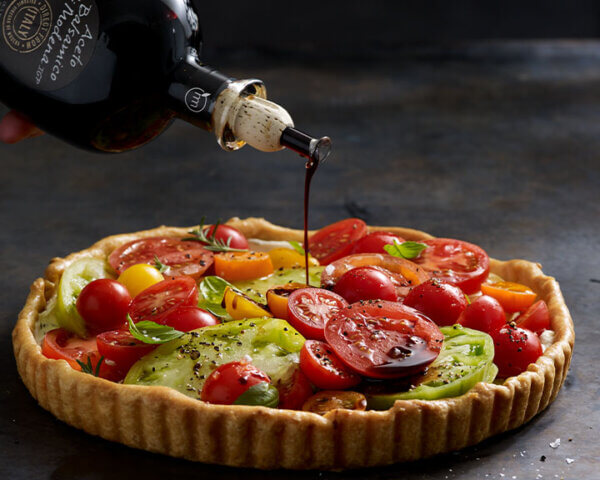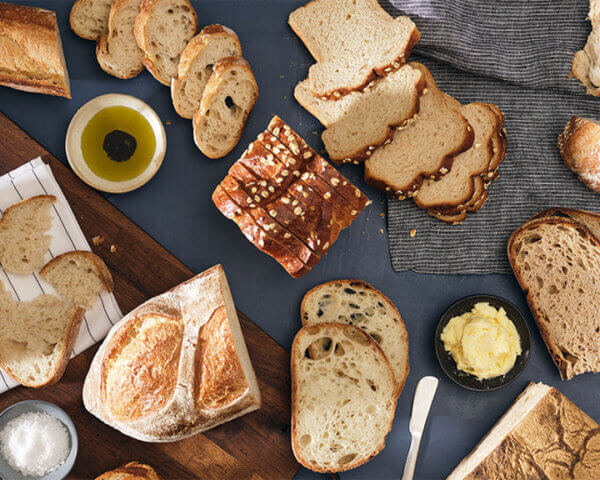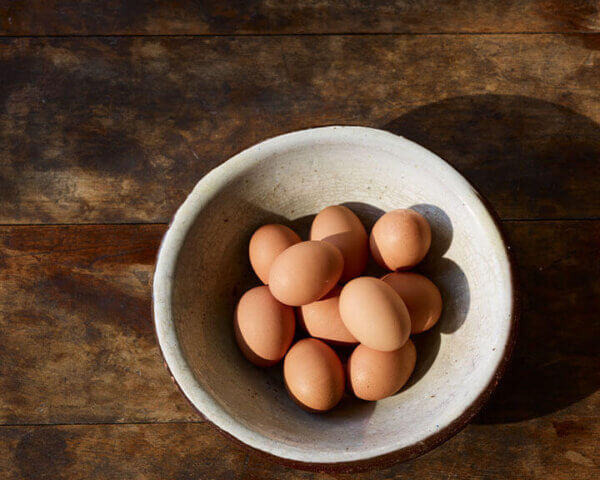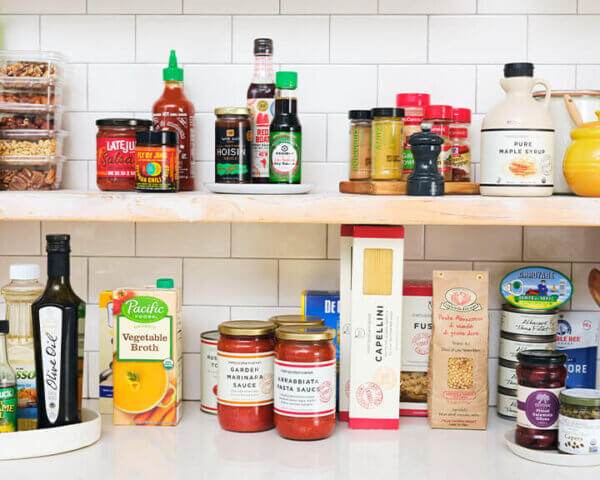101
Cooking rice is one of the most basic kitchen skills. But while it may seem simple at first, there’s actually a lot to know. Depending on the grain, rice may or may not need rinsing, may require more or less water, and may need a longer or shorter cooking time. And more importantly, different types of rice have different textures, flavors, nutritional values, and uses, so making the right rice for your meal starts with choosing the right grain.
White vs. Brown Rice
Think of the difference between white and brown rice as similar to the difference between white and whole wheat flour. While brown rice retains the grain’s nutritious bran and germ, white rice has been processed to remove them. Eating brown rice gives you the benefits of eating whole grains (think: fiber, antioxidants, and B vitamins, to start), but white rice has a milder flavor that pairs with a larger variety of foods, and is softer and fluffier. In general, because its fibrous husk must be softened during cooking, brown rice takes longer to cook than white rice and absorbs more water in the process. White rice absorbs water more quickly, so it generally cooks faster than brown.


Short-Grain vs. Long-Grain Rice
If you browse the rice aisle in a grocery store, you’ll notice some grains are only slightly longer than their width, while some are longer, like 4 to 5 times their width, and some fall somewhere in the middle. Classified as short-, medium-, or long-grained, the world’s thousands of rice varietals all land somewhere on this length spectrum. Shorter-grained rice (Oryza sativa japonica) tends to be starchier and more moist and sticky when cooked, while longer-grained rice (Oryza sativa indica) has a firmer texture that’s dry and loose when it’s done. Both short- and long-grained rice can be purchased either white or brown.
Which Rice is Best?
That means that the cook–that’s you–needs to start by deciding what role you want the rice on your plate to play. If packing your diet with nutrients is paramount, lean toward earthy, nutty-flavored brown rice–shorter grains for sticker rice, or longer grains for rice whose grains stay naturally separated. If you’re in a hurry or want a more neutral, slightly sweeter flavor, pick white rice. Short-grained white rice is starchy enough that it can stick together naturally and act as a sturdy base for scooping. For drier, separate grains that soak up sauces, pick a long-grained rice. Keeping a variety of rice on hand allows you to try different types with different meals.
Preparing Rice
Once you’ve chosen the rice you want, consider the cooking method: while some people boil rice in plenty of moving water (like pasta), the most common cooking method is absorption, where you combine the water and rice in a pot, bring the water to a boil, then cook the rice over very low heat until all the water is absorbed and the grains have expanded and softened. But before that even starts, some rice requires rinsing. Because the starchy endosperm of brown rice isn’t exposed, brown rice doesn’t need more than a quick rinse (if any) before cooking. Some white rice (especially short-grained varieties) needs thorough rinsing, which removes any of the excess starch that causes excess clumping or heaviness and in some cases, any additives such as talc used in the polishing process. (Chemical residue is uncommon on rice grown in the United States.) With some rice, such as the short-grained white Arborio and bomba rice used in risotto and paella, the grains are cooked slowly in a small amount of liquid, so the starch has a special role to play, leaching into the liquid and turning it into a creamy sauce.
Cooking Rice
For absorption cooking, first figure out how much water your rice needs. Most packages list a “water-to-rice ratio,” or how much water each cup of rice requires. (One cup of rice typically yields about 3 cups, or 4 servings, of cooked rice.) Shorter grains and white rice require less water; longer grains and brown rice are much thirstier. As a rule, use the water-to-rice ratios listed in the table below, which may or may not match what’s listed on the packaging. (Note also that the ratio required for one cup of rice may be different than the ratio for cooking two cups!) When cooking rice, the cooking time starts once the water is boiling. When you spot big, healthy bubbles, give the rice a stir to prevent sticking, cover the pot, reduce the heat to your stove’s lowest setting, and start the timer.
Once the rice has been cooked, remove the pot from the heat, keeping the lid on, and let it rest for 10 to 15 minutes. (Don’t skip this step! It allows each grain to reach maximum fluffiness.) Typically, brown rice takes longer to cook than white rice, and long-grain rice takes longer than short-grain rice. Increasingly, home cooks are turning to appliances like multipots, pressure cookers, and rice cookers to steam their grains to perfection in a little less time. These are by no means necessary (and some steadfastly insist that the stovetop method is best) but note that they require different water-to-rice ratios. You’ll probably need less water for each cup of rice when you use a rice cooker or multipot, so be sure to consult your appliance’s manual before cooking.
Below is our guide to most of the rice you’ll find on our store shelves. With general style categories, the common types in each category that you’ll find at Metropolitan Market, starchiness levels, origin, best water-to-rice ratios, cooking times, and meal recommendations, it’s your one-stop guide for choosing and cooking the right rice.
SHORT GRAIN RICE

Sushi Rice
- COMMON TYPES: CalRose, Organic California Sushi, California Supreme Kokuho Rose
- STARCHINESS: High
- ORIGIN: Japan
- WATER-TO-RICE RATIO: 1 ¼:1 (for 1 cup rice)
- RINSING: Rinse well, in a fine-mesh strainer, until water runs clear
- COOK/REST TIME: 20 minutes/10 minutes
- BEST FOR: Sushi (note that the rice used in sushi is further seasoned before rolling), side for stir-fry or Japanese curry
Brown Sushi Rice
- COMMON TYPES: Sukoyaka Genmai whole grain brown rice, Koshihikari (“GABA”) sprouted brown rice
- STARCHINESS: Low
- ORIGIN: Japan
- WATER-TO-RICE RATIO: 1 ½:1 (for 1 cup rice)
- RINSING: None, but some rice needs to be soaked before cooking
- COOK/REST TIME: 30 minutes/10 to 15 minutes
- BEST FOR: Grain bowls, sushi


Risotto
- COMMON TYPES: Arborio, Vialone Nano, Carnaroli
- STARCHINESS: High
- ORIGIN: Northern Italy
- WATER-TO-RICE RATIO: 2:1 to 3:1 (depends on recipe)
- RINSING: Depends on recipe
- COOK/REST TIME: 30 to 60 minutes (depends on recipe)
- BEST FOR: Risotto, sweet rice desserts like rice pudding
Paella Rice
- COMMON TYPES: Bomba, paella rice
- STARCHINESS: High
- ORIGIN: Eastern Spain
- WATER-TO-RICE RATIO: 2:1 to 3:1 (depends on recipe)
- RINSING: 30 to 60 minutes (depends on recipe)
- COOK/REST TIME: Depends on recipe
- BEST FOR: Paella, sweet rice desserts


Black or Purple Rice
- COMMON TYPES: Forbidden rice
- STARCHINESS: Low
- ORIGIN: Asia
- WATER-TO-RICE RATIO: 1 ¼:1
- RINSING: Quick rinse
- COOK/REST TIME: 20 minutes/10 minutes
- BEST FOR: Side dish, grain bowls
LONG GRAIN RICE
Long-Grain White Rice
- COMMON TYPES: Wild Harvest Organic
- STARCHINESS: Low
- ORIGIN: California
- WATER-TO-RICE RATIO: 1 ½:1
- RINSING: Rinse well, in a fine-mesh strainer, until water runs clear
- COOK/REST TIME: 16 to 18 minutes/10 minutes
- BEST FOR: Rice bowls, burritos, side dish, pilaf, baked rice dishes


Basmati
- COMMON TYPES: Basmati, Indian-style basmati, brown basmati, “Tex-Mati”
- STARCHINESS: Low
- ORIGIN: India
- WATER-TO-RICE RATIO: 1 1/2:1
- RINSING: Rinse well, in a fine-mesh strainer, until water runs clear
- COOK/REST TIME: 15 minutes/10 minutes
- BEST FOR: Indian curries, side dish
Jasmine
- COMMON TYPES: Thai Jasmine, California Jasmine
- STARCHINESS: Medium
- ORIGIN: Thailand
- WATER-TO-RICE RATIO: 1 ½:1
- RINSING: Rinse well, in a fine-mesh strainer, until water runs clear
- COOK/REST TIME: 15 minutes/10 minutes
- BEST FOR: Thai food, Chinese food


Long-Grain Brown Rice
- COMMON TYPES: Wild Harvest Organic
- STARCHINESS: Low
- ORIGIN: California
- WATER-TO-RICE RATIO: 1 ¾:1
- RINSING: None
- COOK/REST TIME: 30 minutes/10 minutes
- BEST FOR: Grain bowls, side dish
Wild Rice
- COMMON TYPES: Fall River
- STARCHINESS: Very low
- ORIGIN: California, Great Lakes region, Canada
- WATER-TO-RICE RATIO: 4:1
- RINSING: Quick rinse
- COOK/REST TIME: 60 minutes, then drain once grains split and soften. No resting time.
- BEST FOR: Side dish, stuffing, grain salads

Three More Tips For Perfect Rice
1. Choose a pot or saucepan that’s just the right size for your rice. The combination of water and rice should ideally come about halfway up the side of the pot, but not more, to provide just the right steaming environment.
2. Once you cover your rice and reduce the heat, never stir your rice during the cooking process. Only when the rice has rested should you dip into it–and in that case, gently fluffing the cooked rice with a fork or a rice paddle (rather than stirring) is best. If you cook rice often, a rice paddle is a good investment.
3. You can reheat rice in the microwave! Add a small spoonful of water to it in the bottom of a microwave-safe container, cover loosely, and microwave until the rice is steaming hot, 1 to 2 minutes (depending on how much you’re reheating). Cover tightly and let steam another minute or two before serving.





